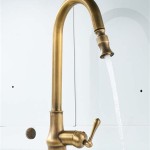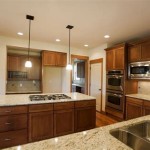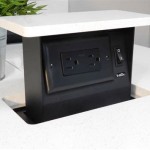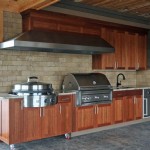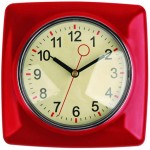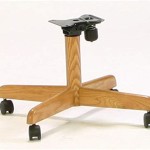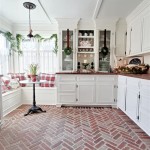How to Choose the Right Size Hardware for Kitchen Cabinets
Selecting the appropriate size hardware for kitchen cabinets is a crucial aspect of any kitchen renovation or update. The hardware, including knobs, pulls, and hinges, significantly impacts both the functionality and aesthetic appeal of the space. Choosing hardware that is disproportionate to the cabinet size can lead to an unbalanced or even awkward appearance. Furthermore, improperly sized hardware can compromise the ease of use and ergonomics of the cabinets, affecting the overall user experience. This article provides a comprehensive guide to navigating the process of selecting the right size hardware for kitchen cabinets, considering various factors to achieve optimal results.
The term 'hardware' in this context refers to the handles, knobs, pulls, hinges, and other metal or composite components used to open, close, and secure cabinet doors and drawers. While the aesthetic design of the hardware is important, its size and proportion relative to the cabinet are equally significant. For example, a small, delicate knob on a large, imposing cabinet door will appear visually insignificant and could be difficult to grip. Conversely, an excessively large pull on a small drawer can overshadow the cabinet itself and appear cumbersome. Therefore, a balanced approach considering both form and function is essential.
Properly sized hardware enhances the overall visual harmony of the kitchen and contributes to a sense of cohesiveness. When all the design elements are in proportion, the kitchen becomes a more inviting and functional space. Conversely, mismatched or poorly sized hardware can create a jarring effect and detract from the overall aesthetic. It is also important to consider that the chosen hardware style should complement the kitchen's overall design theme, whether it is modern, traditional, or transitional.
Key Point 1: Understanding Cabinet Dimensions and Proportions
Before selecting any hardware, a thorough understanding of cabinet dimensions is paramount. Accurate measurements of cabinet doors and drawers are necessary to ensure that the chosen hardware is appropriately sized. This involves measuring the width and height of the cabinet doors and drawers, as well as considering the thickness of the door or drawer fronts. These measurements will serve as a basis for determining the ideal size of knobs, pulls, and other hardware components.
For cabinet doors, the size and type of handle or knob should be proportional to the door's dimensions. A general rule of thumb is to choose a knob or pull that is approximately one-third the length of the cabinet door. However, this is a guideline and can be adjusted based on personal preference and the overall design of the kitchen. For taller cabinets, it may be preferable to use longer pulls to create a more balanced appearance. Consideration should also be given to the style of the cabinet door. Raised panel doors, for example, may benefit from slightly larger hardware to complement their more substantial design, while flat panel doors may benefit from smaller, more understated knobs or pulls.
Drawer size is equally important when selecting hardware. For small drawers, such as those found in vanity cabinets, smaller knobs or pulls are typically more appropriate. As drawer sizes increase, the size of the hardware should also increase proportionally. For wide drawers, it is often recommended to use two pulls instead of one to provide better balance and ease of use. The placement of multiple pulls should be symmetrical and visually appealing.
The thickness of the cabinet door or drawer front is another factor to consider. Thicker doors or drawers may require longer screws or bolts to securely attach the hardware. It is essential to ensure that the screws or bolts are long enough to penetrate the door or drawer without protruding excessively on the other side. The hardware manufacturer typically provides recommendations for screw length based on the door or drawer thickness.
Key Point 2: Guidelines for Selecting Knob and Pull Sizes
While there are no hard and fast rules for selecting knob and pull sizes, there are several guidelines that can help to achieve a visually balanced and functional outcome. These guidelines take into account the size and style of the cabinets, as well as the overall design of the kitchen.
Knobs:
Knobs are generally used on smaller cabinet doors and drawers. The size of the knob should be proportional to the size of the door or drawer. A knob that is too small will be difficult to grip, while a knob that is too large will appear out of place. A common guideline is to choose a knob that is between 1 inch and 1.5 inches in diameter for most cabinet doors and drawers. However, this can be adjusted based on personal preference and the overall design of the kitchen. For larger or more ornate cabinets, slightly larger knobs may be appropriate.Pulls:
Pulls are typically used on larger cabinet doors and drawers. They provide a more substantial grip and are often easier to use than knobs, especially for those with limited dexterity. The length of the pull should be proportional to the width of the door or drawer. A general guideline is to choose a pull that is approximately one-third the length of the cabinet door or drawer. For example, a 12-inch drawer would ideally have a 4-inch pull. This recommendation varies based on personal preference and the aesthetic of the kitchen design. For wide drawers, it may be beneficial to use two pulls instead of one, placed equidistant from the center of the drawer.Center-to-Center Measurements:
The center-to-center measurement refers to the distance between the screw holes on a pull. This measurement is important when replacing existing hardware, as it determines whether the new hardware will fit the existing holes. When installing new cabinets, the center-to-center measurement can be chosen based on personal preference and the size of the pull.It is advisable to purchase a sample of the chosen hardware before committing to a large order. This allows for a visual assessment of the hardware's size and style in relation to the cabinets. It also provides an opportunity to test the hardware's ergonomics and ensure that it is comfortable to use. Consider attaching the sample temporarily to a cabinet door or drawer to evaluate its appearance from different angles and distances.
Key Point 3: Considerations for Hinges and Other Hardware Components
In addition to knobs and pulls, hinges play a crucial role in the functionality and appearance of kitchen cabinets. The size and type of hinge should be carefully considered to ensure that the cabinet doors open and close smoothly and securely.
Hinge Types:
There are several different types of hinges available, including concealed hinges, surface-mounted hinges, and decorative hinges. Concealed hinges are hidden from view when the cabinet door is closed, providing a clean and modern look. Surface-mounted hinges are visible when the door is closed and can add a decorative element to the cabinets. Decorative hinges are available in a variety of styles and finishes to complement the overall design of the kitchen.Hinge Size:
The size of the hinge should be appropriate for the size and weight of the cabinet door. Heavier doors require larger and more robust hinges to prevent sagging or misalignment. The hinge manufacturer typically provides recommendations for hinge size based on the door's dimensions and weight. It is critical to follow these recommendations to ensure that the hinges provide adequate support and durability.Other Hardware Components:
Other hardware components, such as drawer slides, also contribute to the functionality of kitchen cabinets. The quality of the drawer slides can significantly impact the ease of use and longevity of the drawers. High-quality drawer slides provide smooth and quiet operation, while inferior slides can be noisy and prone to malfunction. Consider selecting drawer slides with a soft-close mechanism to prevent drawers from slamming shut.The finish of the hardware should also be consistent throughout the kitchen. Matching the finishes of the knobs, pulls, hinges, and other hardware components creates a cohesive and aesthetically pleasing look. Common hardware finishes include brushed nickel, polished chrome, oil-rubbed bronze, and matte black. The chosen finish should complement the color and style of the cabinets and countertops.
When choosing hardware, it is important to consider the overall design of the kitchen and select hardware that complements the existing décor. The size, style, and finish of the hardware should all work together to create a harmonious and visually appealing space. Experimentation with different styles and finishes can help to identify the perfect hardware for a particular kitchen design. Consult with a kitchen designer or hardware specialist for expert advice and guidance.
Selecting the right size hardware for kitchen cabinets is a multi-faceted process that requires careful consideration of cabinet dimensions, style preferences, and functional requirements. By following the guidelines outlined in this article, individuals can make informed decisions and achieve optimal results in their kitchen renovation or update projects. Ultimately, the goal is to create a kitchen that is both aesthetically pleasing and highly functional, with hardware that complements the overall design and enhances the user experience.

How To Choose Hardware Pull Size For Your Cabinets
How To Choose The Best Size Pulls For Your Cabinets Trubuild Construction

The Right Length Cabinet Pulls For Doors And Drawers Porch Daydreamer
Cabinet Hardware Sizing Guide The Knobbery Door Bath Accessories Faucets Furniture Knobs And Pulls

Hardware Guide
Cabinet Hardware Sizing Guide The Knobbery Door Bath Accessories Faucets Furniture Knobs And Pulls

The Right Length Cabinet Pulls For Doors And Drawers Kitchen Hardware
How To Choose The Best Size Pulls For Your Cabinets Trubuild Construction

Comprehensive Guide To Cabinet Hardware Size Placement Handles More

5 Tips On Choosing The Right Kitchen Cabinet Hardware
Related Posts


